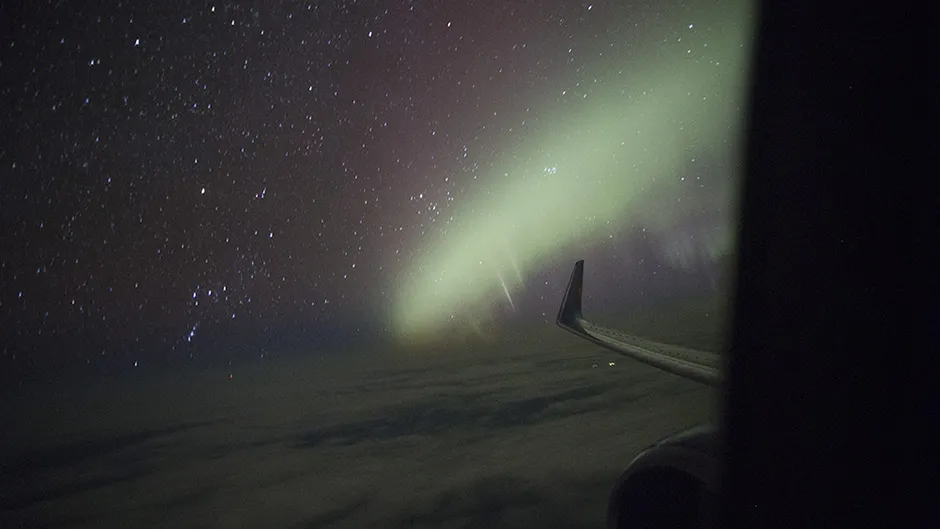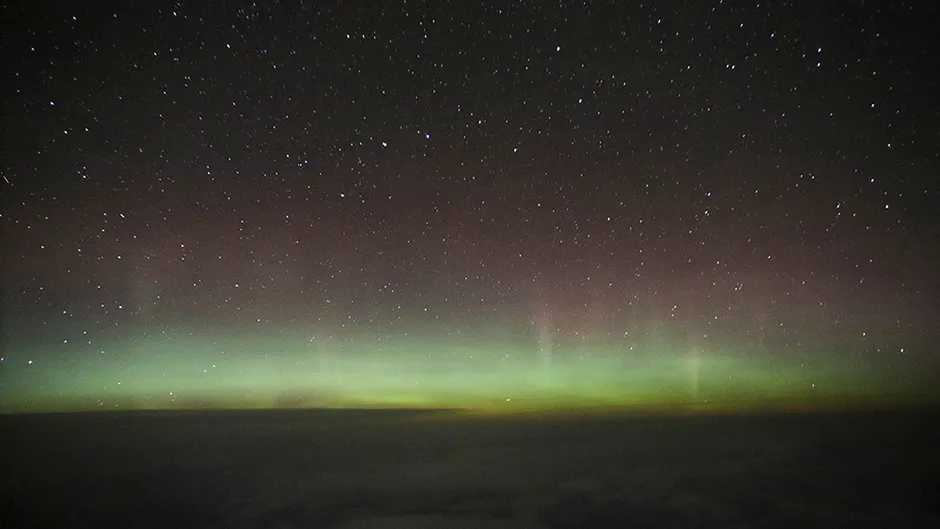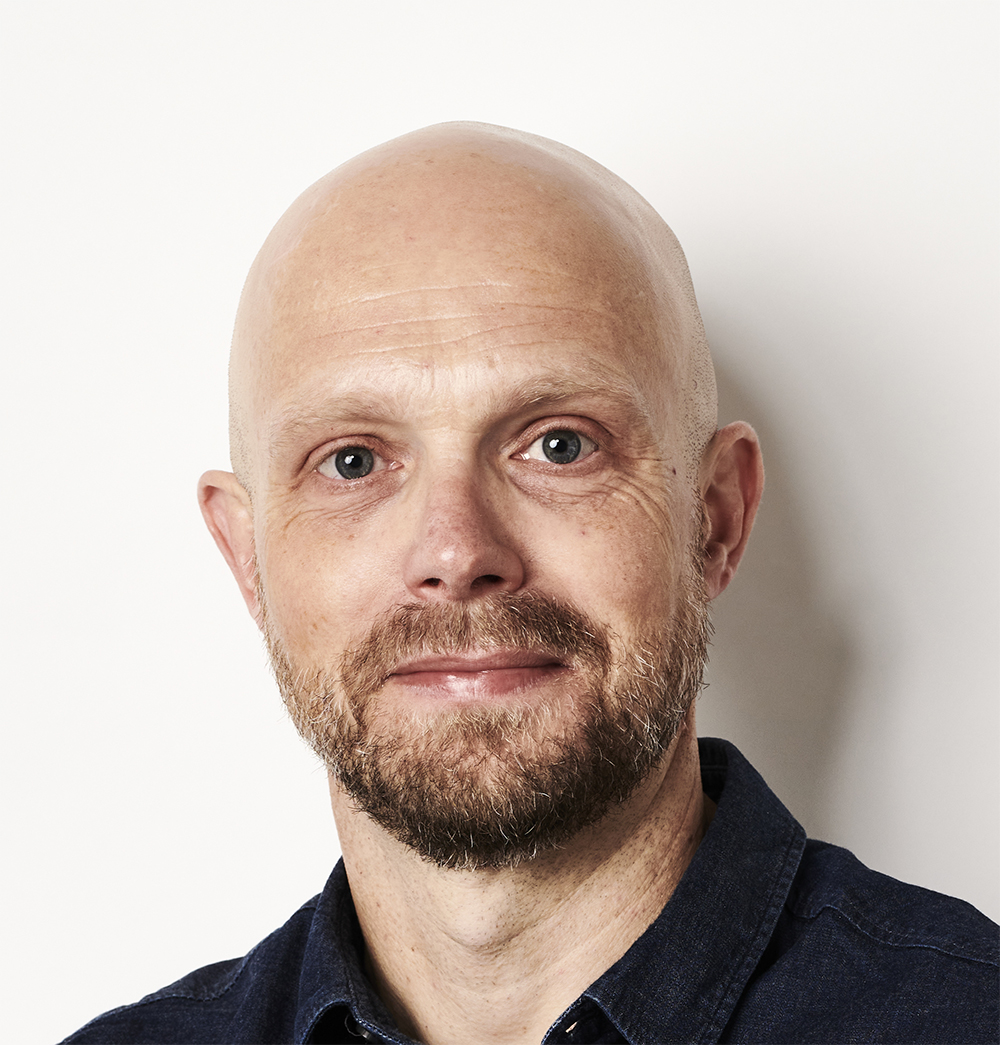As I leave the check-in desk I glance at my boarding pass and notice something unusual – 'Depart: Gatwick. Destination: Gatwick' it says.
I'm about to get on Omega Holidays’ first aurora flight of the 2017-18 season, and take a circular route up to the northern edge of UK airspace and back again in search of the Northern Lights.
I’d learnt at the pre-flight presentations that the boarding pass wasn’t to be the only unique thing about this flight: the aeroplane cabin would be in complete darkness.
“We’ll be flying up to around 60ºN latitude and doing a couple of circuits between Shetland and the Faroes,” says one of the flight astronomers, Nigel Bradbury.
“Once we get to Edinburgh we’ll turn all the lights in the cabin off so that everyone’s eyesight has time to get dark-adapted.”
The darkness, the thinness of the atmosphere at our flight’s altitude of 39,000ft and the complete absence of light pollution or nearby lights, means the stars will be incredibly bright, Bradbury says.
“If we do see the aurora it will be against a really starry sky,” he promises.
As we take off that evening I think back to that line, wondering whether I will finally get to see the aurorae (they’d escaped me before, on the Isle of Skye).
The talks have fully prepared me for what to expect, and there is a buzz of excitement in the cabin at this unusual flight experience.

The flight begins familiarly enough, with hot drinks and a light dinner served by the cabin crew.
Then, as we travel farther north, the differences become more apparent.
Instead of duty free announcements, over the speakers comes the voice of the other flight astronomer, The Sky at Night's Pete Lawrence.
As we pass the lights of Manchester and Leeds below, he explains what the aurora are, where they come from and what the chances of seeing them are.
“Charged particles in superheated gas streaming from the Sun get channelled by Earth’s magnetic field into ovals that sit over the Poles,” he describes.
“When these particles collide with our atmosphere, the elements in it glow to give off the extra energy they’ve been given.
“As we get further north, we’re getting closer to that oval.
In a bit we’ll be peering over the horizon at it to see what it’s doing tonight.”
Pretty soon the lights of Edinburgh and the Firth of Forth glide by below and the announcement comes that the cabin lights are to go off. And then we are in darkness.
This isn't the darkness we’re used to in towns and cities; this is 10km high over the North Atlantic in a plane without navigation lights darkness.
Complete, enveloping and initially surprising; the brightest thing now are the stars.
And how bright they are.
Through the window is a view of the constellations for which ground-based astronomers travel to Hawaii, Mount Teide, and Chile's Atacama Desert.
Low to the eastern horizon, Orion’s shoulder star Betelgeuse shines a steady orange, and above is a Pleiades star cluster with many more than the five stars you can usually easily see from the ground.

Suddenly Lawrence’s voice cuts through the reverie of dark-sky stargazing.
“Ladies and gentlemen, I can confirm we have an aurora!” he announces.
“If you’re on the right side of the plane, look towards the direction of flight and you’ll see it now.”
And there it is: a faint glow low to the horizon, looking more misty grey than green to the eye.
The plane banks left, revealing more of the northern horizon, and the full display of the aurora comes into view.
Now there is a definite colour and structure.
Delicate green fingers – rays – appear from the top of the green cloud.
It's time to rotate seats with my neighbours so they can get a look at the awesome spectacle, and then the plane banks 180º left again to bring the aurora into view for the other side of the plane.
The star-studded dark sky swing into view again.
Now the window frams the band of the Milky Way, clearly standing out as a diffuse river stretching up from the horizon.
Embedded within it, the stars of the Summer Triangle shine bright. What a view!
We take four or five circuits like this, alternating the subtle green auroral cloud with the glittering field of stars, suspended in complete darkness; the astronomers commentating on the vista as it slowly changes.
It is enchanting to be completely removed from the familiar experience of night-time darkness down on the ground, like being in an isolation tank the size of a Boeing 737.
As we turn south it sinks in that I have finally seen the aurora.
A short time later I think back to the presentation before the flight and the description of what a really bright aurora would look like, with the inside of the plane glowing green…
Luckily for me there are flights like this that run right through until March!
Chris Bramley was a guest of Omega Holidays (Tel: 01524 375000), a specialist in unique air-charter excursions and events-based breaks.
Northern Lights Flightsare roundtrips, departing from and returning to a choice of 15 regional airports in November, February and March.
The trip costs £220 per person, including a one-hour presentation, a three-hour flight with light refreshments, and on-board commentary from astronomers.
